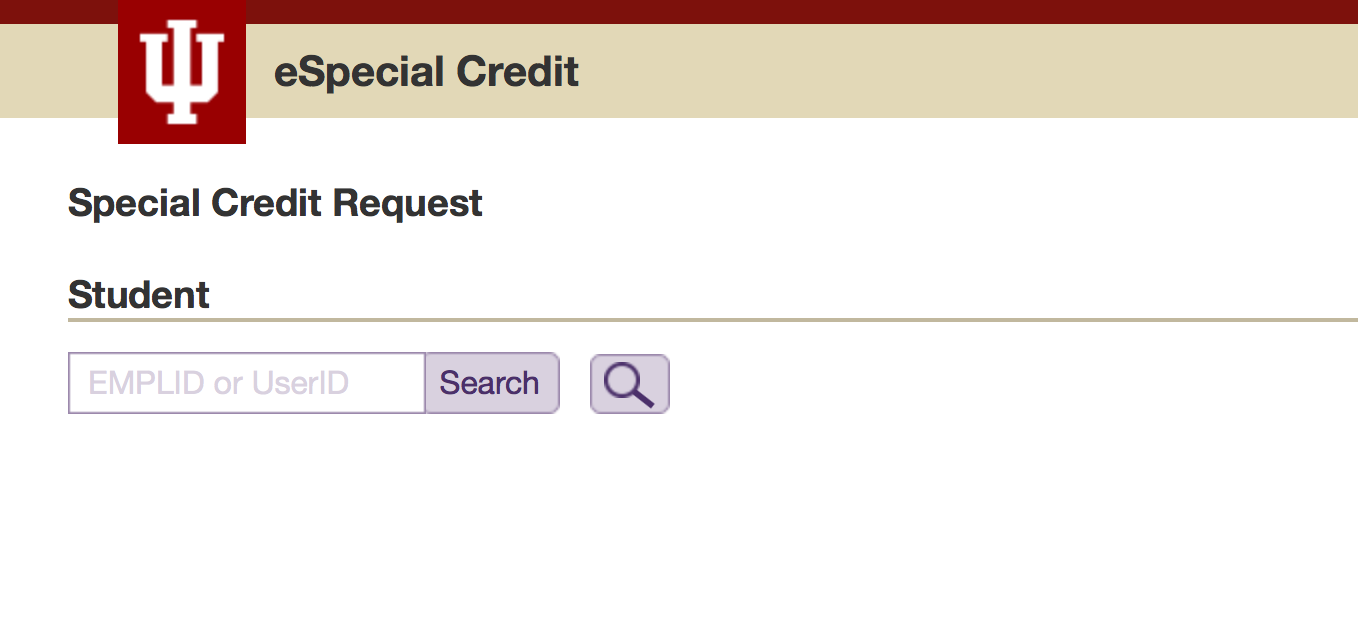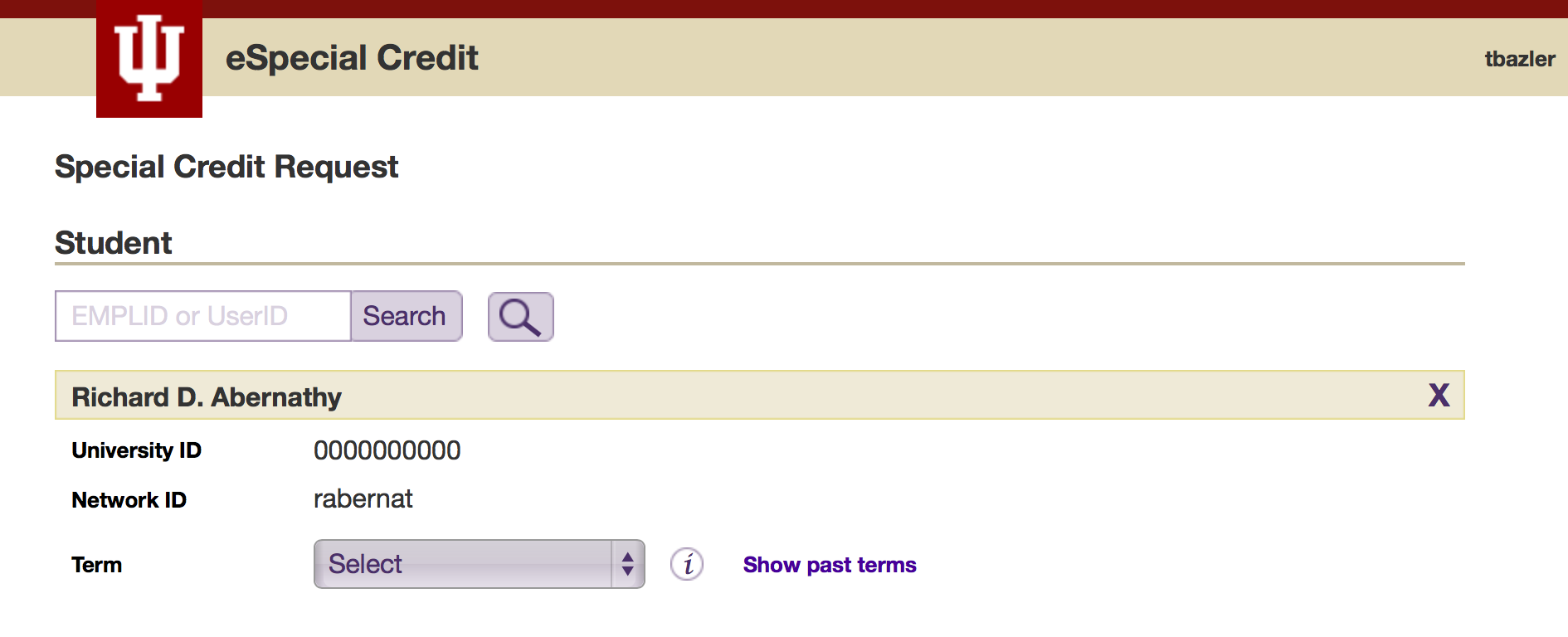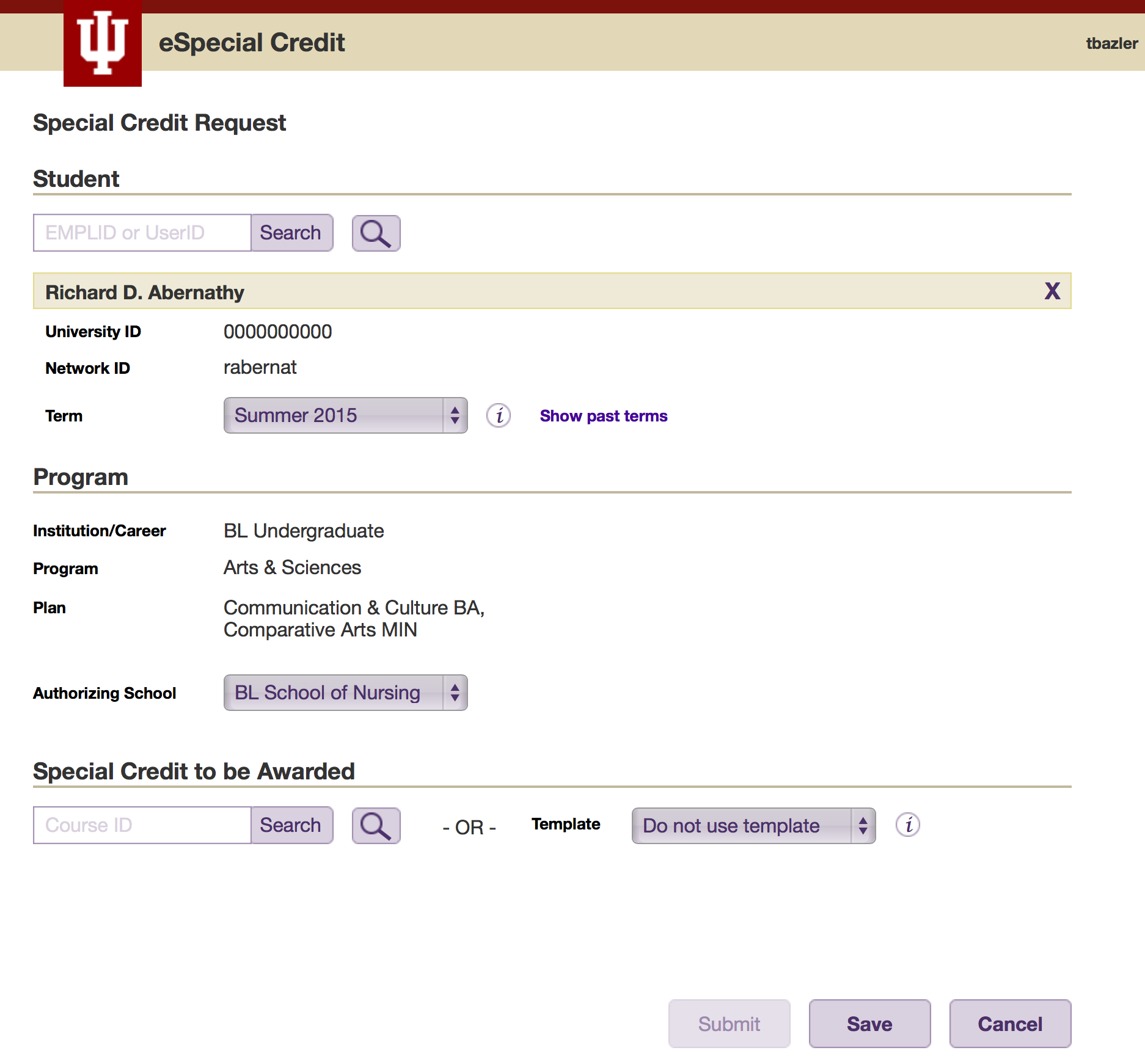
The eSpecial Credit service is a service used by university administrators to initiate course credit requests for students based on work and life experiences. The original system was a form that required the user to enter all student and course data manually. This required the user to know or have immediate access to all student and course information including ID numbers. The original system only allows the administrator to request credit for a single course with each request, even though several schools frequently give course credit for multiple, related classes. In these cases, the user is required to complete the process many times for a single student. In addition to lacking basic functionality, the interface and interactions were very outdated, as ca be see below in Sceren 1.

Screen 1: Original Special Credit Request Form
The redesign had a number of goals including:
Overall, we wanted to simplify the process by creating a system that would pull in the bulk of the student and course data, and provide options to the user dynamically, based on the data entered.
Upon entering the system, the user is presented with a text field in which s/he can enter the student's university or user ID. If the user does not know either of the student's IDs, a lookup option is also provided. The initial screen is clean and simple, providing only what the administrator needs for the first step of the process.

Screen 2: Simple Student Search
After the user identifies or selects a student, the student's data is pulled into the request form, as shown below in Sceen 3. A 'Term' dropdown is displayed providing a list of terms that the student is term activated for and that course credit can be assigned to.

Screen 3: Student information
Based on the term selected, the student's program information will be displayed along with a list of possible authorizing schools for the user to select from. After the user selects a school, the course search and template option are displayed. If the school selected does not offer any templates, this option would not be shown on the screen.

Screen 4: Program Information
As with the student search, two options are provided for locating course data. If the administrator knows the course ID, s/he can enter it in the text field. If not, a lookup is provided in which the user can search for a course by subject and catalog number. After identifying or selecting a course, the course data is displayed on the screen as shown below in Screen 5.

Screen 5: Course Information
The process has been significantly simplified for the adminstrators, reducing the amount of data that has to be manually entered into the system. In addition, pertinent information is displayed, based on choices the user makes, so options are valid and errors less likely. The template functionality, allowing the administrator to request credit for a predefined set of related courses with a single request, will also reduce the time and effort required of the administrators.
A form for the registrar to use to create templates was also needed. This form needed to include basic program and school information, the courses to include on the template, and the ability to activate/inactivate the template for use. The Template Creation form is shown below in Screen 6.

Screen 6: Registrar Template Creation Form
Initial design ideas were developed in Omnigraffle. The screenshots above were taken from the prototypes created using Axure.